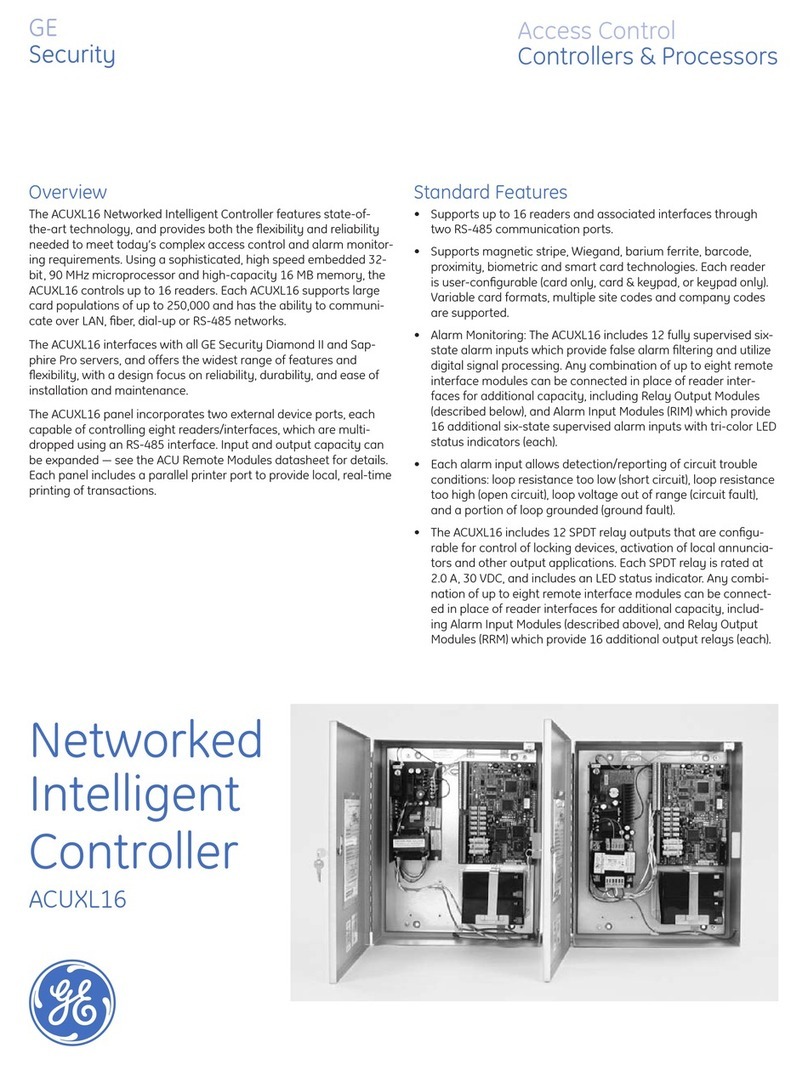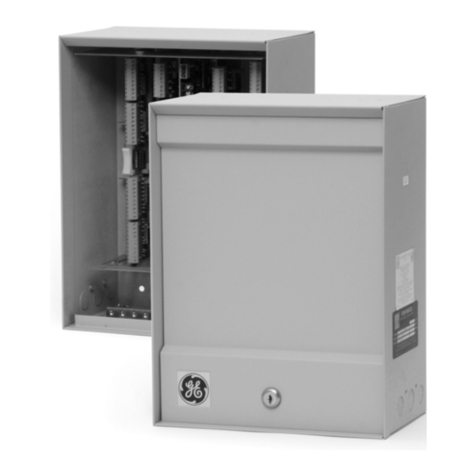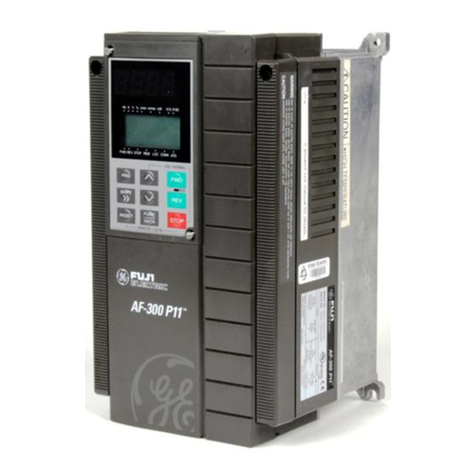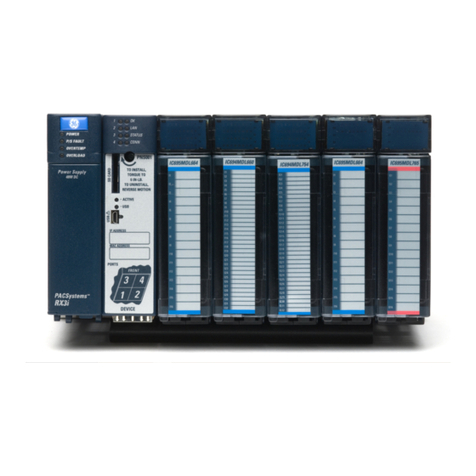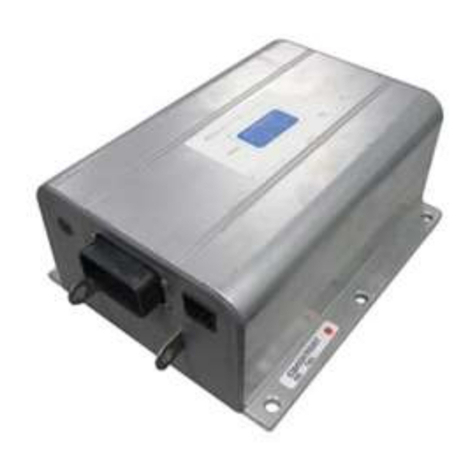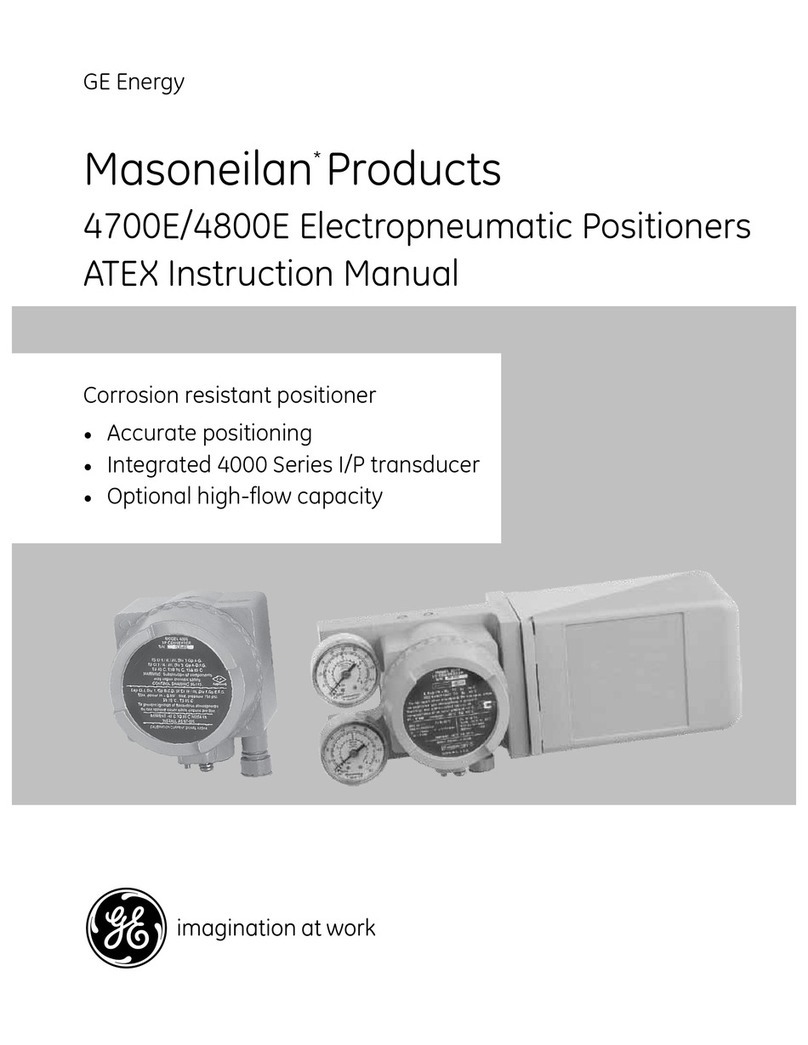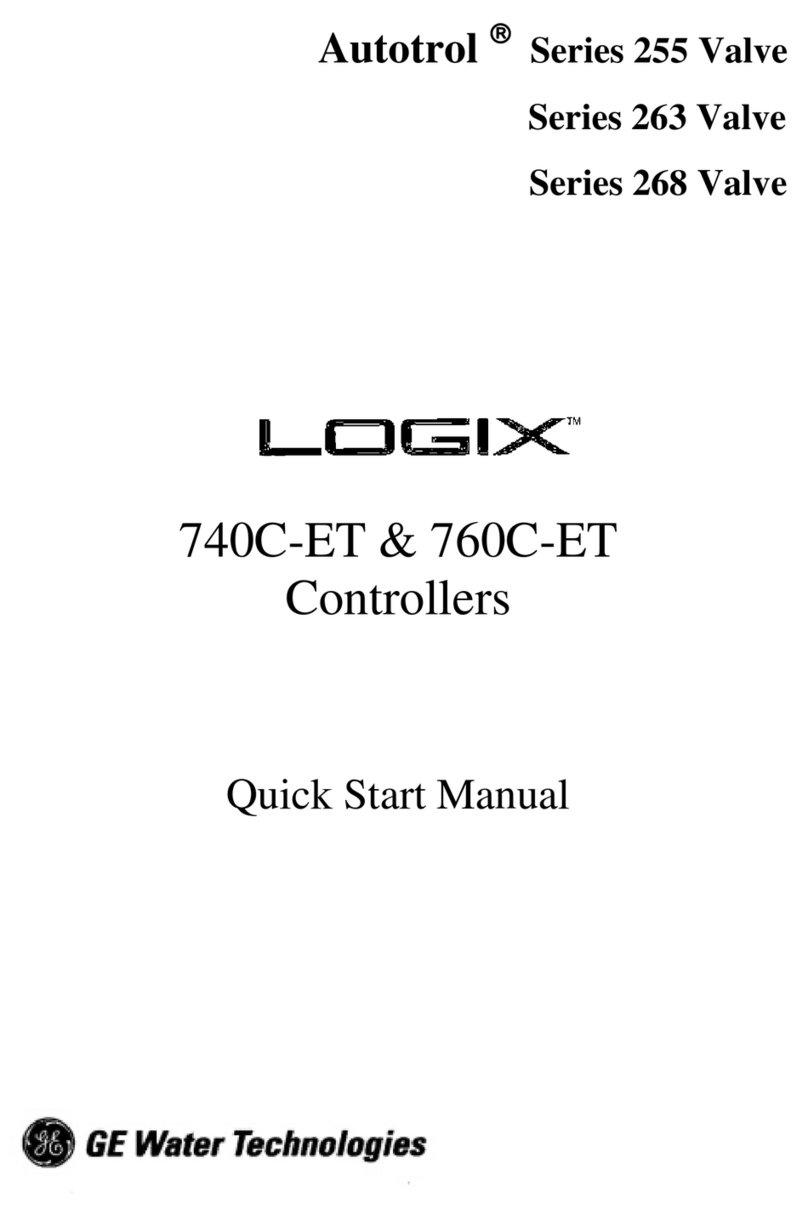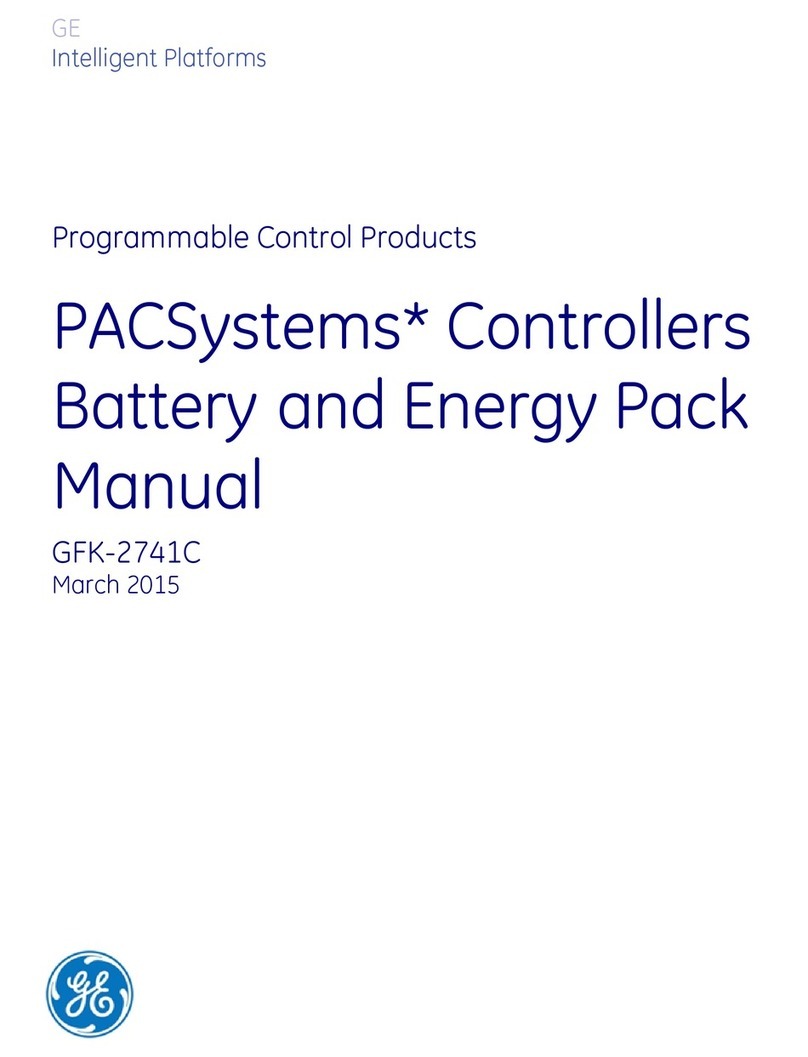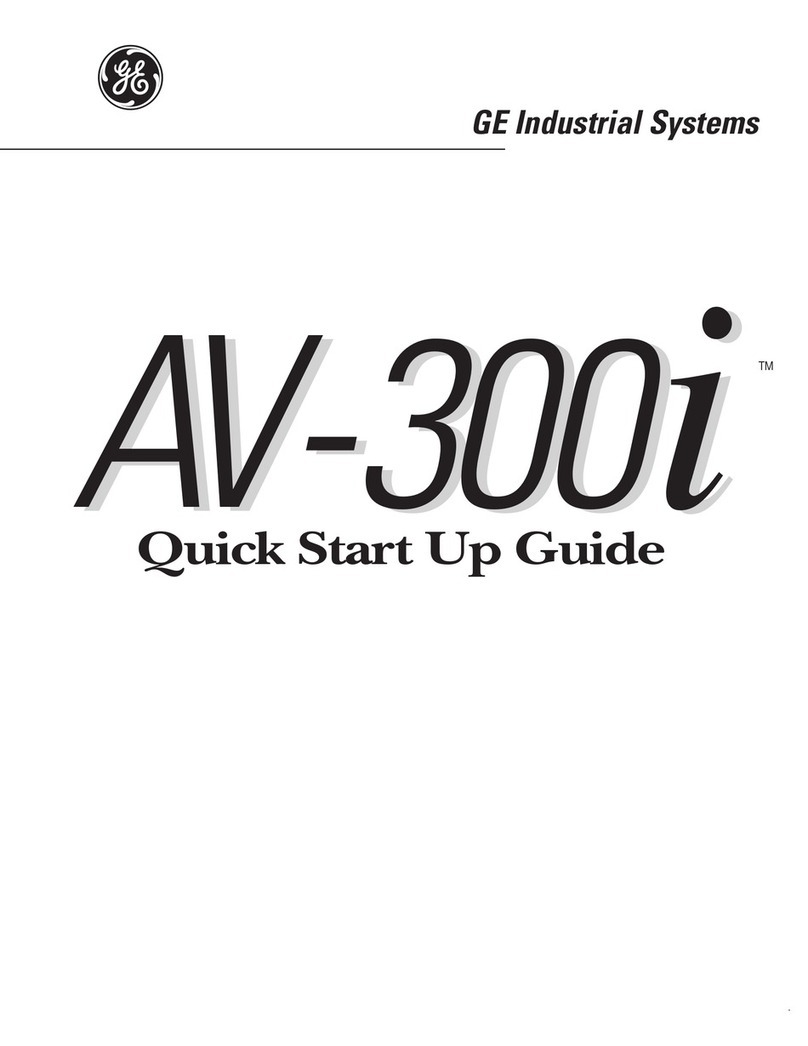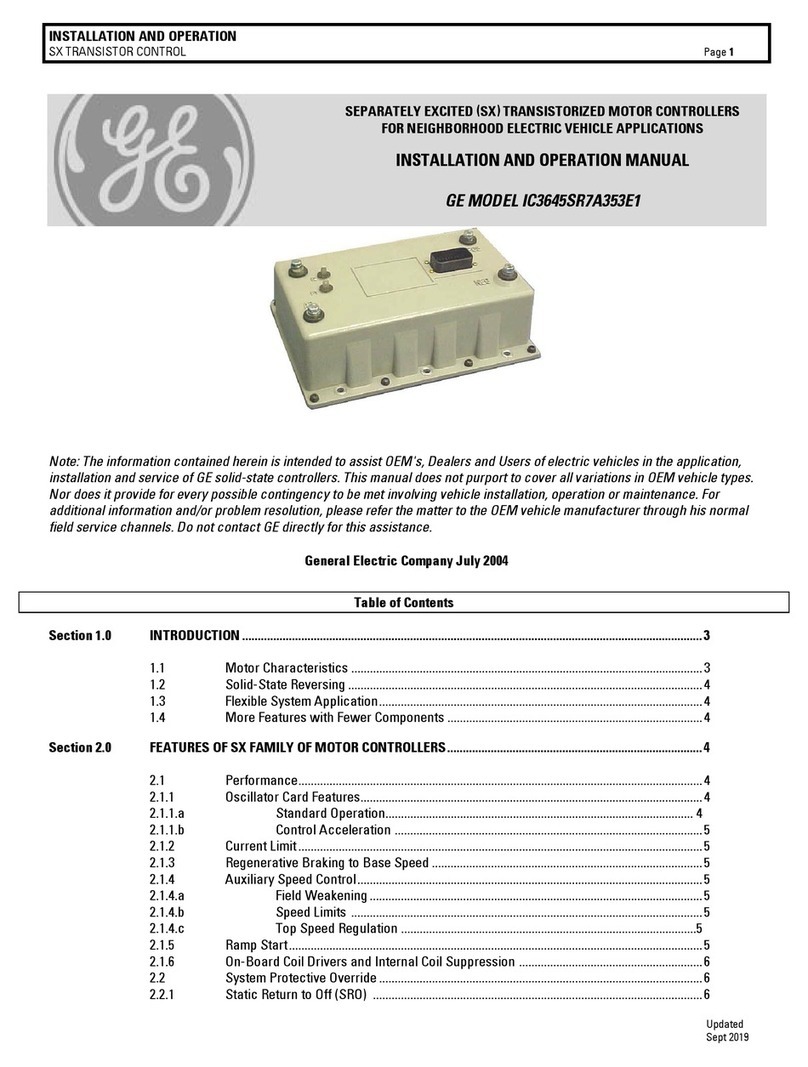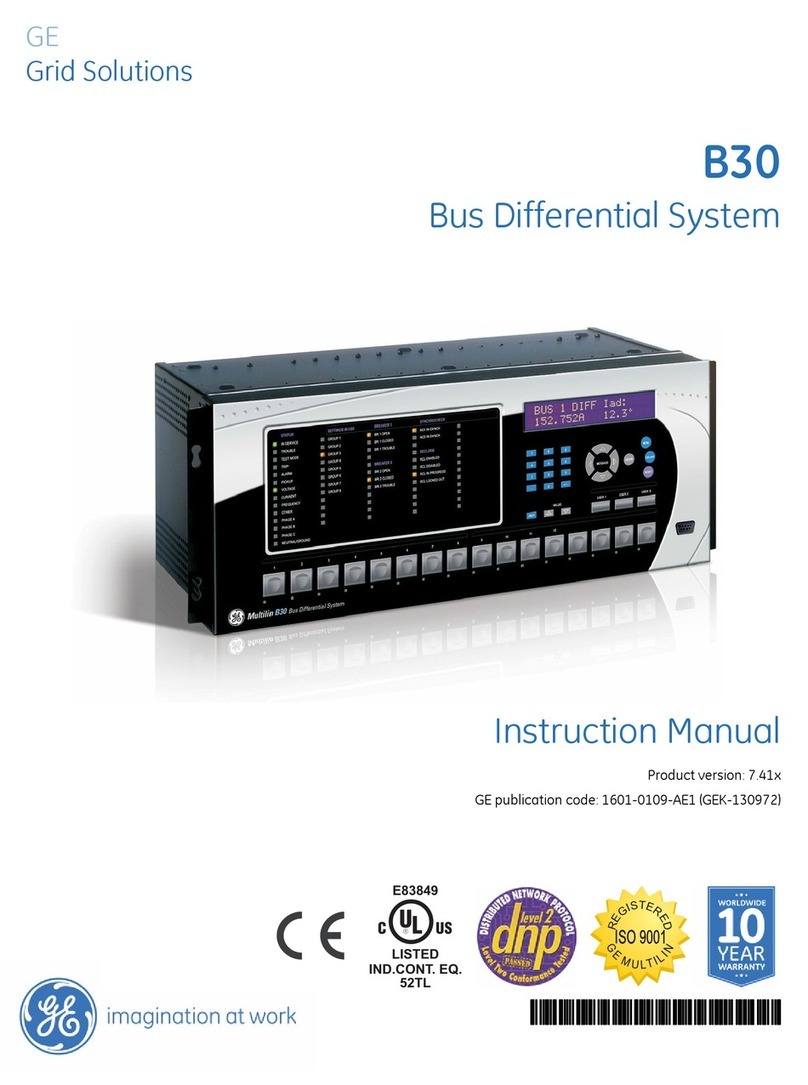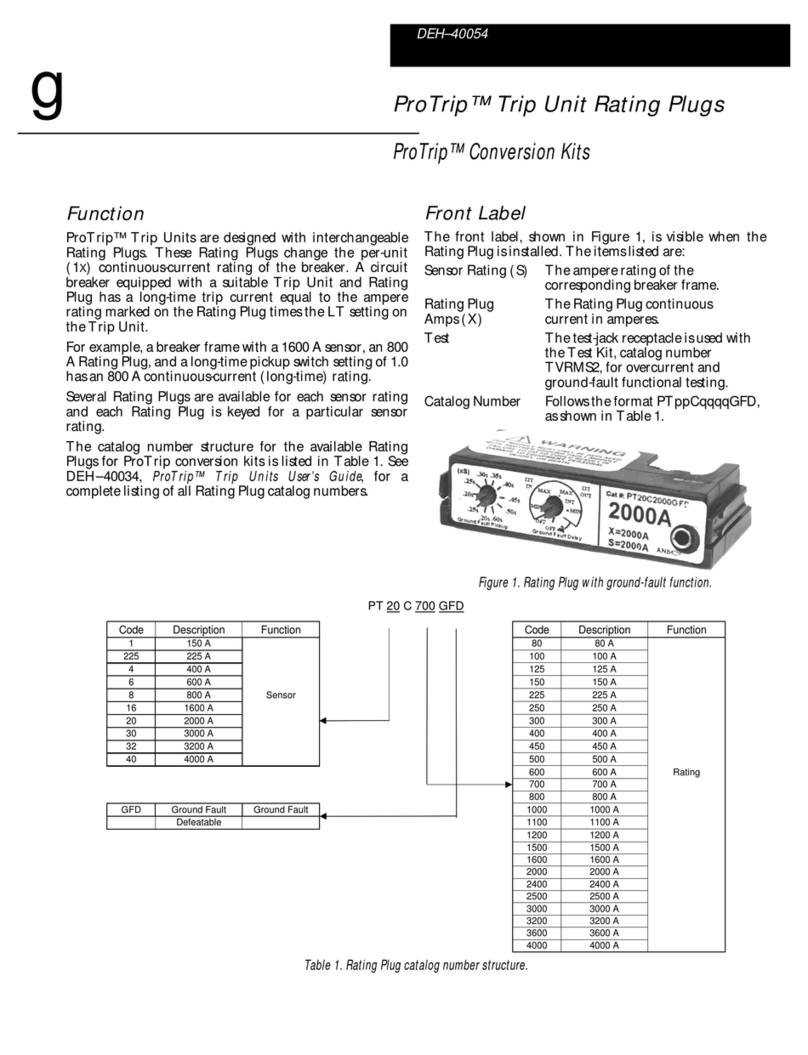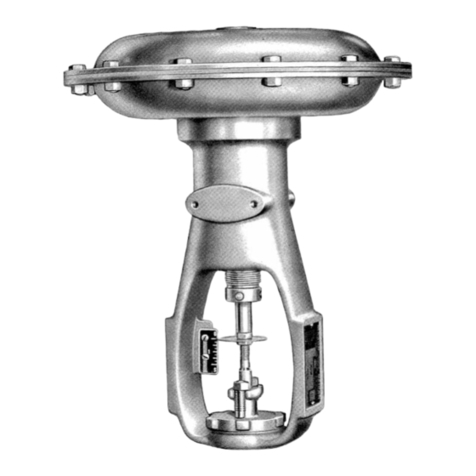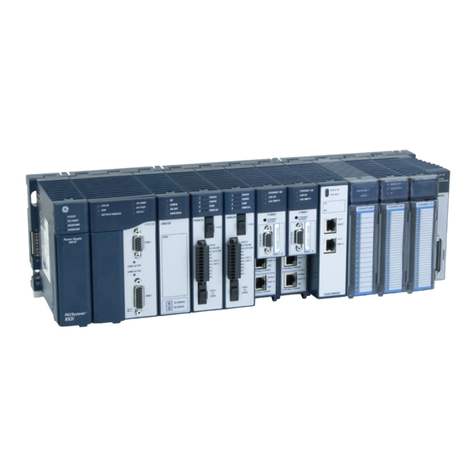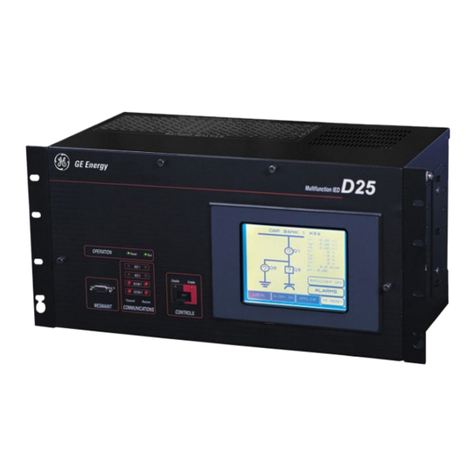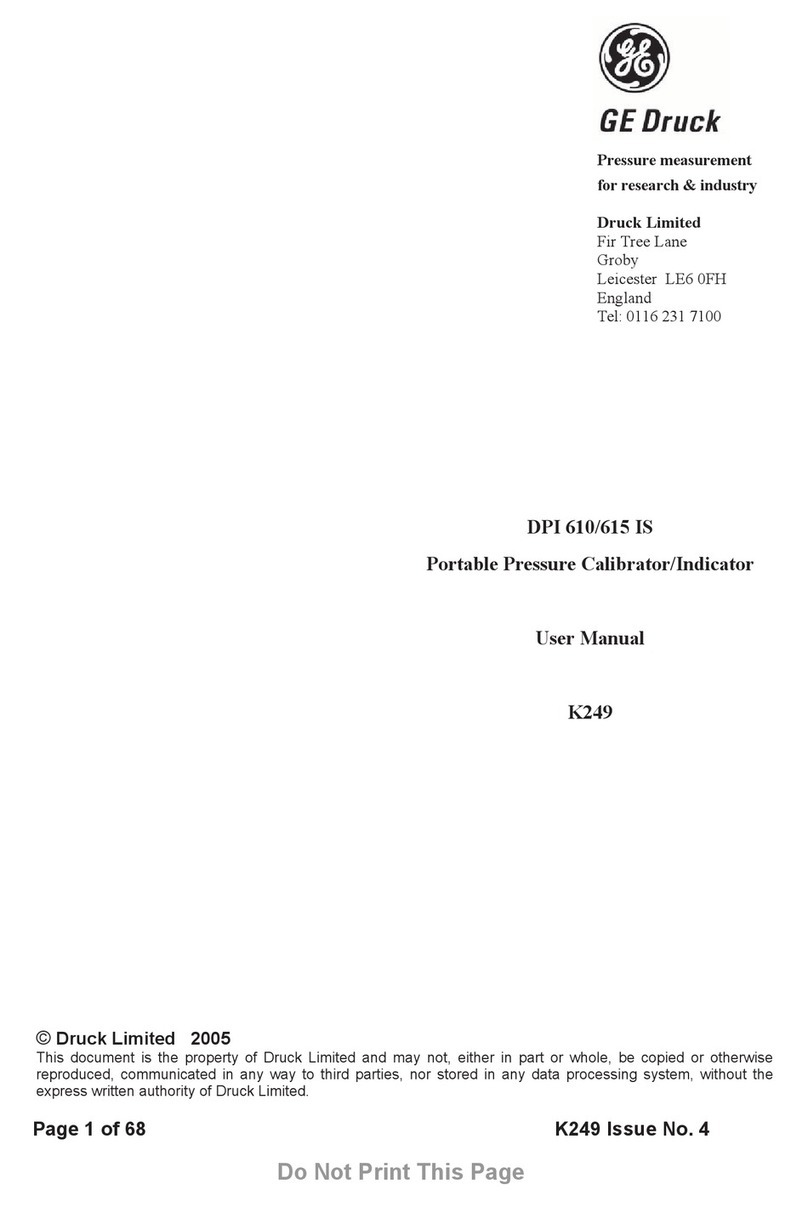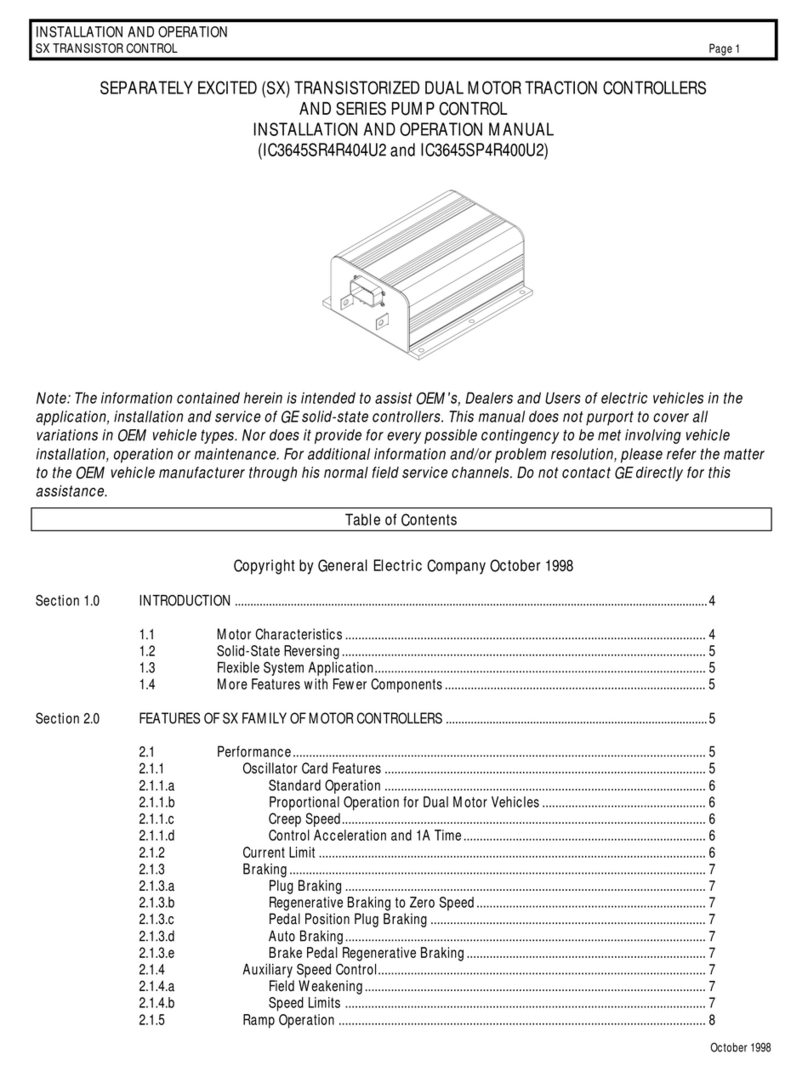
7 | GE Oil & Gas
© 2016 General Electric Company. All rights reserved.
7. Initialize the sensitivity adjustment:
Turn the sensitivity adjustment drum to the left (increasing
numbers on the scale) as far as it will turn. Then turn it one
(1) complete rotation to the right (decreasing numbers on the
scale).
8. Apply a “False Signal” to the sensing port of the VRP-B-CH:
The “False Signal” pressure should be equivalent to the
desired setpoint pressure. Refer to the original invoice
paperwork supplied with the product for the appropriate
setpoint pressure setting. If the adequate gas pressure is not
available from the pipeline, a nitrogen bottle with regulator
may be utilized to introduce the proper “False Signal” pressure.
Additionally, an SP series setpoint adjustment pump may be
used to provide a false signal pressure above the available
pipeline gas pressure.
Note: It is recommended that a calibrated pressure gauge be
used to ensure accuracy of the “False Signal” pressure.
9. Adjust the setpoint adjustment screw:
Turn the setpoint adjustment screw on top of the VRP-B-CH
unit until cylinder top and cylinder bottom pressure gauges
show equal pressure. Clockwise rotation decreases cylinder
bottom pressure. Turn setpoint adjustment only when
pressures are not equal.
Note: For pilots venting to atmosphere in control, continue,
otherwise, skip forward to the adjustment section for pilots
bleeding to a pressure system.
10. Final sensitivity drum adjustment
Turn the sensitivity adjustment to set the cylinder top and
cylinder bottom equal to power gas pressure. When equal,
the exhaust port should stop bleeding gas. If not, turn the
sensitivity adjustment drum to the left (increasing numbers)
until the exhaust port just stops bleeding.
11. To check the deadband, Turn the setpoint adjustment screw
clockwise until the cylinder bottom pressure just drops off.
Then turn the setpoint adjustment screw counterclockwise
until the cylinder top pressure just drops off. Keep track of the
total rotation of the screw. Now place the setpoint adjustment
screw in the middle of this rotation.
Turn the sensitivity adjustment drum to the right (decreasing
numbers) until the exhaust port just starts bleeding gas.
Check the total deadband again and repeat this process until
the deadband is eliminated and the following criteria is met:
With a 3/4 percent change in the sensing pressure (above
and below setpoint), the cylinder top and cylinder bottom
pressure should develop a pressure differential equivalent
to 20 percent of power gas.
Example:
Power gas = 100 psig
Orifice #3 top, #3 bottom
Setpoint = 400 psig
With a change of the sensing pressure to 403 psig, the cylinder
top pressure should drop at least 20 psig.
With a change of the sensing pressure to 397 psig, the cylinder
bottom pressure should drop at least 20 psig.
If the Pilot sensitivity is greater than this, bleed gas may further be
reduced by turning the sensitivity again to insure the pilot meets
the minimum criteria.
For VRP-B-CH pilots bleeding to a pressure system
10. Leave the pilot vent port attached to the system it normally
discharges to and insure this discharge line is open. The pilot
is properly adjusted when both gauges are equal at the pilots
desired setpoint, the cylinder pressure are set at 90 percent
of the power gas, and any movement to the adjustment drum
causes an immediate response from the pilot output gauges.
11. Verify “False Signal”:
Upon achieving setpoint, inspect the gauge which measures
the “False Signal.” If the “False Signal” has deviated, readjust
it to attain proper pressure. Remember that the “False Signal”
applied to the VRP-B-CH sensing port should be equivalent to
the desired pressure setpoint of the pilot. Upon readjustment
of the “False Signal” repeat steps 10 & 11 until setpoint
is achieved.
12. Remove “False Signal” pressure from sensing port of
VRP-B-CH.
13. Open valve on sensing line.
14. Open cylinder block valves:
Opening the cylinder block valves will reestablish
communication between the VRP-B-CH and the control
valve actuator and put the system back into service. Exercise
caution when putting the VRP-B-CH into service to prevent
unintended closure/opening of the valve.
Regulator is now ready for service.
The initial adjustments are utilized to set the VRP-B-CH at a point
approximating the desired setpoint. In order to achieve optimum
accuracy of setpoint and sensitivity, the fine tuning procedures
need to be completed.
Fine Tuning Procedures
To change the VRP-B-CH setpoint only:
In the case where the VRP-B-CH only requires a change in
setpoint only, the setpoint adjustment may be rotated to
achieve a new setpoint while the VRP-B-CH is in service.
No other adjustments need to be made. GE recommends
noting the setpoint change per revolution of the control spring
installed in the pilot. Setpoint change per revolution of the
control spring can be found in the table entitled VRP-B-CH
Pilot Selection Chart on page 6 of this manual.
To change the VRP-B-CH sensitivity:
In the event that the VRP-B-CH requires a change in to the
sensitivity adjustment, the setpoint adjustment will also require
adjustment. Any changes in the sensitivity adjustment affect
the setpoint adjustment. A decrease (higher numbers) in the
sensitivity of the pilot, will require the setpoint adjustment to be
decreased. An increase (lower numbers) in the sensitivity of the
pilot, will require the setpoint adjustment to be increased.
Once adjusted, the Becker VRP-B-CH pilot typically requires
very little or no readjustment.
Troubleshooting
Control problems generally fall into one of the following
